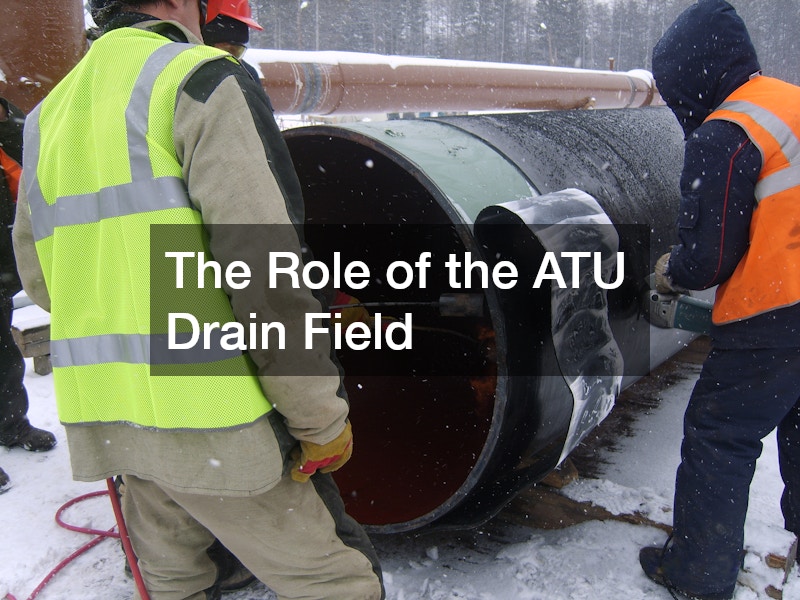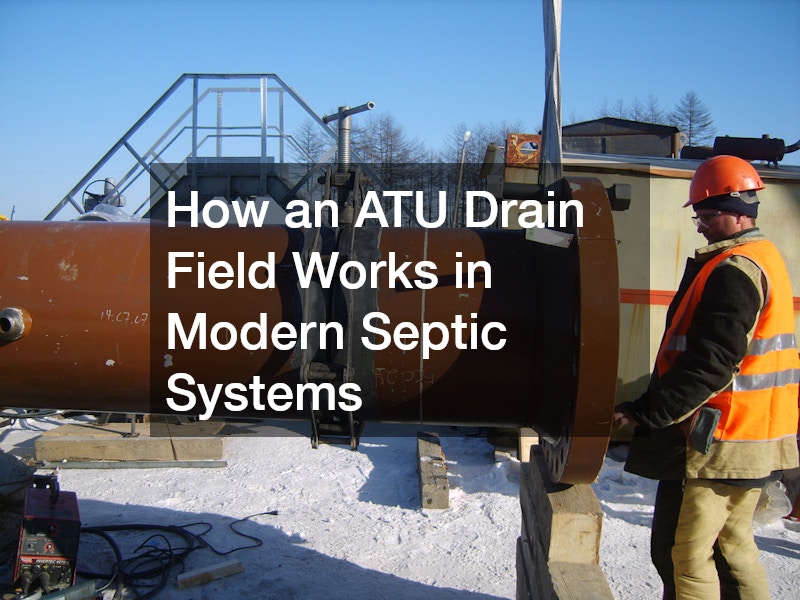
An ATU drain field is a crucial component of advanced wastewater treatment systems, particularly those that utilize an Aerobic Treatment Unit (ATU). Unlike traditional septic systems, which rely solely on anaerobic processes, ATU systems use oxygen to treat wastewater more efficiently. The ATU drain field plays a significant role in this process by further dispersing and filtering the treated effluent before it returns to the environment.
What Is an ATU System?
An ATU, or Aerobic Treatment Unit, is a type of septic system that introduces oxygen into the wastewater to promote the growth of aerobic bacteria. These bacteria are more effective at breaking down organic matter than their anaerobic counterparts. As a result, the effluent that leaves an ATU is typically cleaner and more environmentally friendly than that from a traditional septic tank.
ATU systems are often used in areas where soil conditions, lot sizes, or environmental regulations make conventional septic systems impractical. They may also be required in areas with high groundwater tables or near sensitive ecosystems such as lakes, rivers, or wetlands.
The Role of the ATU Drain Field
Once the wastewater has been treated in the aerobic unit, it needs to be safely and efficiently returned to the ground. This is where the ATU drain field comes in. It acts as the final stage in the treatment process, dispersing the treated water over a broad area to allow for natural filtration through the soil.
The drain field is typically made up of a series of perforated pipes laid in trenches filled with gravel or other permeable material. These trenches are carefully designed to promote even distribution of the effluent. As the treated water percolates through the soil, remaining pathogens, nutrients, and other impurities are removed through physical, chemical, and biological processes.
Key Components of an ATU Drain Field
-
Distribution Network: This includes pipes or chambers that evenly spread the treated effluent across the entire drain field. Uniform distribution helps prevent overloading any one section of the soil, which could lead to ponding or system failure.
-
Soil Absorption Area: The soil beneath the drain field acts as a natural filter, removing contaminants from the water before it reaches the groundwater. Proper soil composition and structure are essential for this step to function effectively.
-
Gravel or Media Layer: This layer provides space for the effluent to spread out and begin filtering before reaching the soil. It also supports the drain pipes and prevents them from shifting or becoming clogged.
-
Inspection Ports or Monitoring Wells: These allow property owners or maintenance professionals to check the performance of the system and ensure that it’s operating correctly.
Advantages of ATU Drain Fields
One of the main benefits of an ATU drain field is its ability to handle highly treated effluent, reducing the risk of groundwater contamination. This is especially important in areas with fragile ecosystems or limited space for wastewater dispersal.
Additionally, because the effluent is already partially treated, the drain field doesn’t have to work as hard as it would in a traditional system. This can lead to longer system life and reduced maintenance needs, as long as the system is properly managed.
The advanced treatment process also allows for smaller drain field sizes in some cases, making ATU systems a viable option for properties with limited land or poor soil conditions.
Maintenance and Longevity
Regular maintenance is vital to keep both the ATU and the drain field functioning properly. While the aerobic unit often includes mechanical components like pumps, blowers, or timers, the drain field requires attention as well.
It’s important to avoid excessive water use, which can overwhelm the system, and to keep harmful substances such as grease, chemicals, or non-biodegradable items out of the drain. Routine inspections can help identify any issues early, such as uneven effluent distribution, clogged pipes, or saturated soil.
Maintaining healthy vegetation over the drain field can also help with water absorption and prevent soil erosion. However, large trees or shrubs should be kept at a distance, as their roots can invade and damage the pipes.
Applications of ATU Drain Fields
ATU drain fields are used in a wide range of settings, including residential homes, commercial properties, and community systems. They are particularly useful in locations where environmental protection is a priority, such as near coastal zones, national parks, or watersheds.
In some jurisdictions, ATU systems with drain fields may be required for new construction or when upgrading older, failing systems. Local health departments or environmental agencies often have specific design and installation standards that must be met to ensure proper function.
Environmental Impact
One of the primary reasons ATU drain fields are favored in certain areas is their positive impact on environmental health. By ensuring higher levels of wastewater treatment, these systems help prevent the spread of harmful pathogens and reduce the nutrient load in natural water bodies. This is especially important in preventing issues such as algal blooms and groundwater pollution.
The combination of aerobic treatment and natural soil filtration provides a comprehensive approach to wastewater management, supporting both public health and ecological balance.
An ATU drain field is more than just a dispersal area—it’s a critical part of an advanced system designed to protect the environment and promote long-term wastewater safety. With proper installation and regular maintenance, these systems offer a reliable and effective solution for managing household or commercial wastewater in a wide variety of settings.



